Lending Protocol Taxonomy, part 1: Interest Duration

David Ma
·Oct 25, 2023
Ever since the lending protocol Compound kicked off defi summer in 2020, countless lending protocols have popped up. Many were forks. But some introduced new mechanisms to push the space forward. This blog series will attempt to put a taxonomy on the zoo of lending protocols. Although Aave and Compound are still leading the market in TVL, it is an interesting exercise to understand what innovations are still hidden in the long tail of the market.

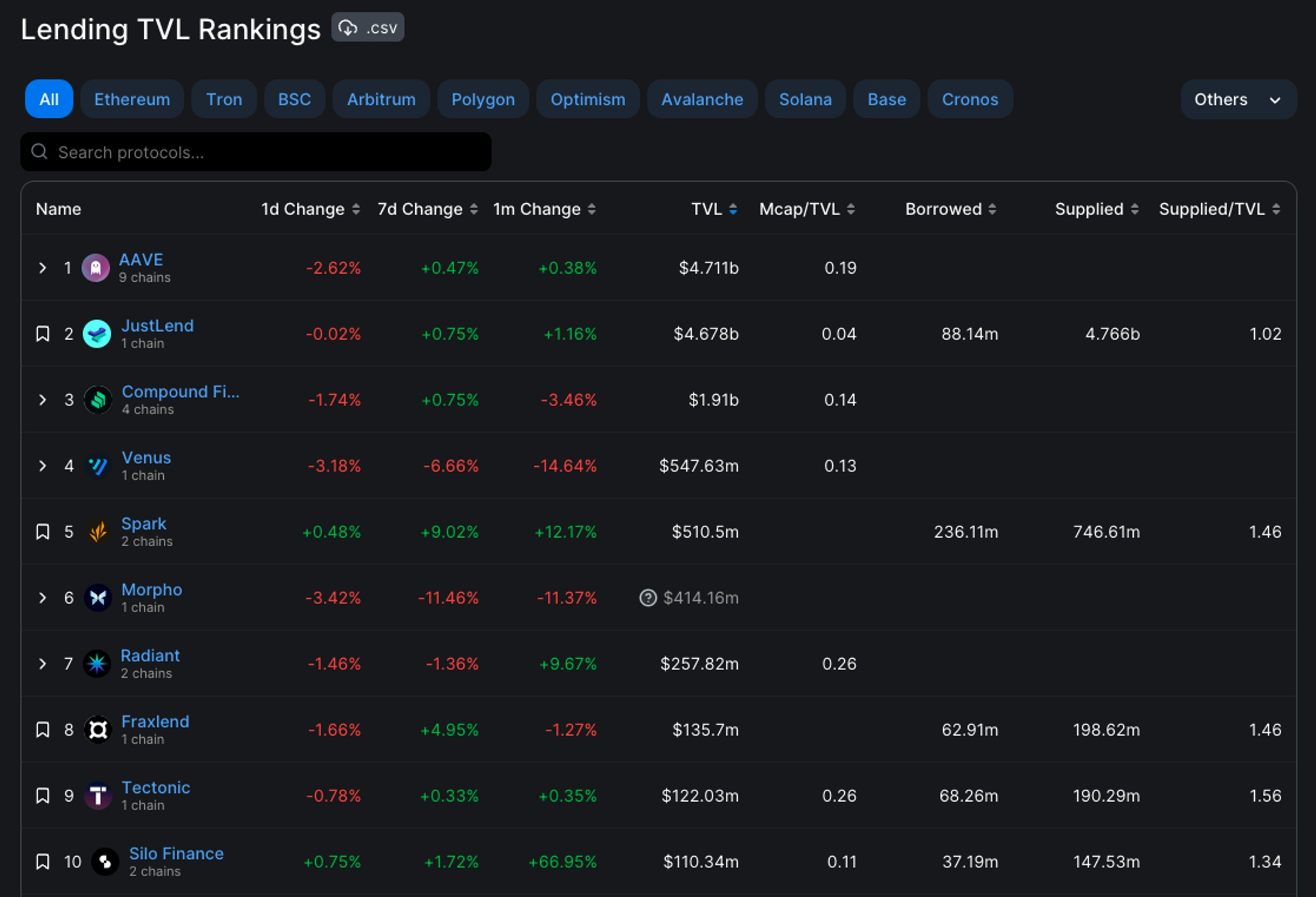
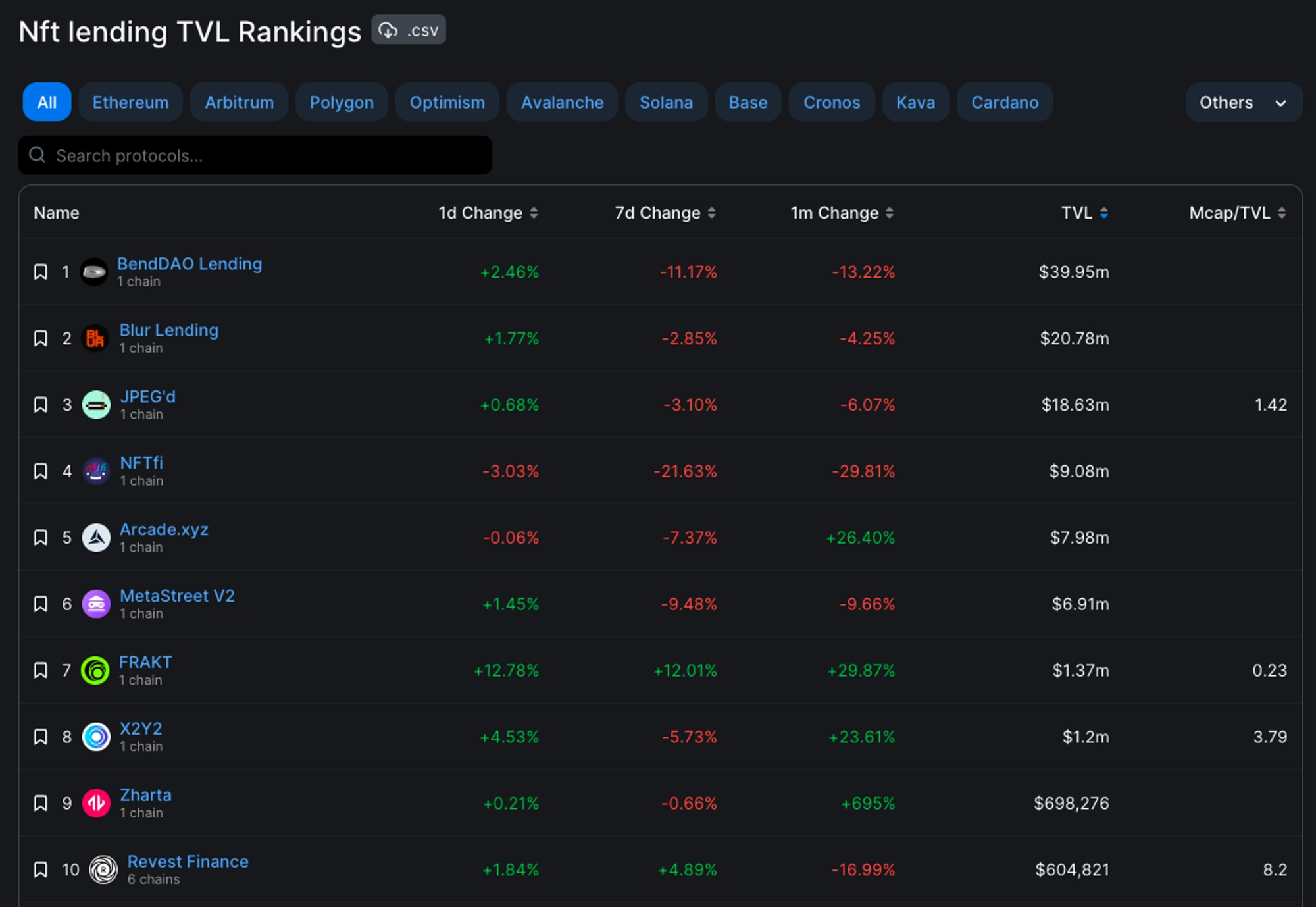
Lending basics
In its most general form, lending is a contract stating person A is handing over assets to person B, and at a later time, getting those assets back. For the risk person A takes, B pays an interest — when the contract ends, the total amount of assets given back should be greater than the original loan amount. In some cases, that is enough for the exchange to happen. For example, government bonds and some corporate bonds (debentures) work with only the promise of future repayment.
For borrowers of lesser repute (e.g. an anonymous person trying to borrow on-chain) however, a promise to repay is not enough because the borrower can simply run away with the money. In this case, the loan needs to be collateralized. The borrower must give custody of collateral assets to a custodian. The collateral must be worth more than the loan itself, so that the borrower has the incentive to to repay and get their collateral back.
One of crypto’s miracle is that the custodian can work partially or fully algorithmically. The smart contract is a credible commitment, removes counterparty risk, and lowers costs for everyone. The cost is smart contract risk.
Similar to how traditional loans have operating procedures to deal with real world imperfections, smart contracts are subjected to a hostile on-chain environment. Depending on how a protocol finds its balance, the result will be a user experience felt by borrowers, lenders, and protocol operators. Although protocol operators aren’t user per-se, the design of the protocol will determine how much of the functionality is dependent on external input, and therefore how much operational work must be put into keeping the protocol running smoothly.
Interest
Interest has two dimensions: duration (time) and price (rate). It specifies how much extra on top of the principal, is paid over a time period.
Interest duration
The duration is also called the term of the loan. In traditional markets the shortest term is one day, often synonymous to the overnight rate or the rate set by the Fed (for the US) for lending to banks. On the other end, there is no limit to how long the term can be, but empirically, 30 years is something that the market is still willing to trade. For example 30-year treasury bills and 30-year mortgages in the US.
In crypto, decentralized finance is unencumbered by traditional infrastructure. Therefore smart contracts can support terms as short as the block time will allow (12 seconds for Ethereum). In fact, >99% of the lending in crypto is done with block time terms. They simply automatically roll over at every block. That is how Aave, Compound, Spark, Morpho, Radiant, and most others work.
Short term rates are also called floating, as opposed to longer term rates that are called fixed term.
Loan Rolling vs Loan Term/Duration
I want to make an important distinction here because using words correctly can save us a lot of confusion going forward.
There’s a difference between rolling aka renewing a loan and the term of the loan. To illustrate, here’s a 1-month term loan and a 1-month worth of overnight loans:
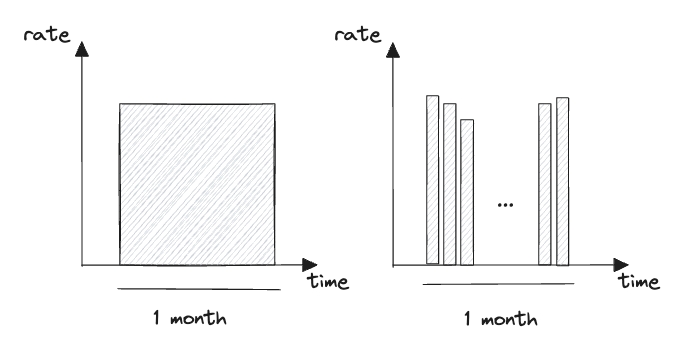
Although the initially quoted overnight loan rate can be equivalent to the 30d rate, the overnight rate is subject to change. In other words, the 30d term loan is locked in.
This CT anon makes the representative mistake:
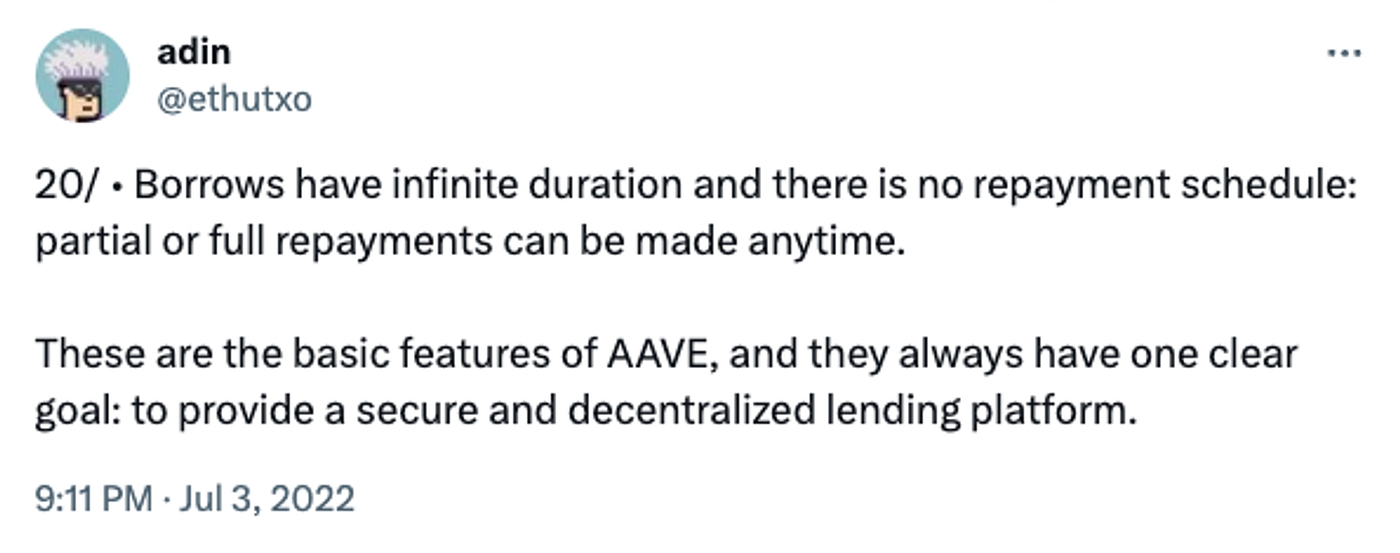
Aave loans do not have infinite duration. In fact, quite the opposite. They have zero duration (or more precisely, a duration of one block). The loans simply roll over automatically. This is a good segue into…
Perpetualization
Perpetualization is a mechanism to automate the rollover of a contract. In this case, a lending contract.
For Aave loans, the perpetual mechanism is pretty simple. The interest rate per block is determined by borrow utilization, and the total interest gets accumulated by the block. So effectively, any loan still outstanding at the end of a block gets renewed at the new rate dictated by the new utilization.
But you don’t often hear people calling Aave loans “perpetual loans” because it’s more of a degenerate case (in the mathematical sense, not trader sense).
Detour: Perpetual futures
A non-degenerate perpetual contract example is the much more famous “perps” or perpetual cash-settled futures contract used by degenerates (this time in the trader sense) to trade price movements in the underlying asset without ever having to touch the assets. A bonus feature from perps is enabling leveraged trading.
First a quick refresher on the construction of perps from futures:
- A future on an asset promises to deliver that asset at a future time.
- A cash-settled future promises to deliver a cash equivalent (usually USD-like) of that asset at a future time. The contract will need to specify the asset’s index price calculation.
- A cash-settled perpetual future promises to pay in cash (potentially negative), at regular intervals, the difference of two prices: the index price and the price of the perp (also called mark price). The payment is called funding. The exact details of the funding calculation will differ depending on the exchange. Generally the differences involve a constant factor, a lookback period, a funding period, min-max clamping if any, and an interest rate offset. Note that if you set a perp’s lookback period to zero, that is basically a future with automatic rollover.
So why did we invent perps in the first place? First, to consolidate liquidity into one instrument. And second, it turns out the market is not an idealized and smooth mathematical object with infinite liquidity and zero spreads. Short duration futures that automatically rolls over increases the opportunities for market manipulation on the funding. While long duration futures don’t track the underlying very well.
With the right parameters, perps smooth out the funding payment calculation over time and can make empirical tradeoffs between tracking error and market manipulation risk.
Perpetual loans with positive duration
Now that we’ve established a mapping between futures and lending contracts, we can summarize it in this table:
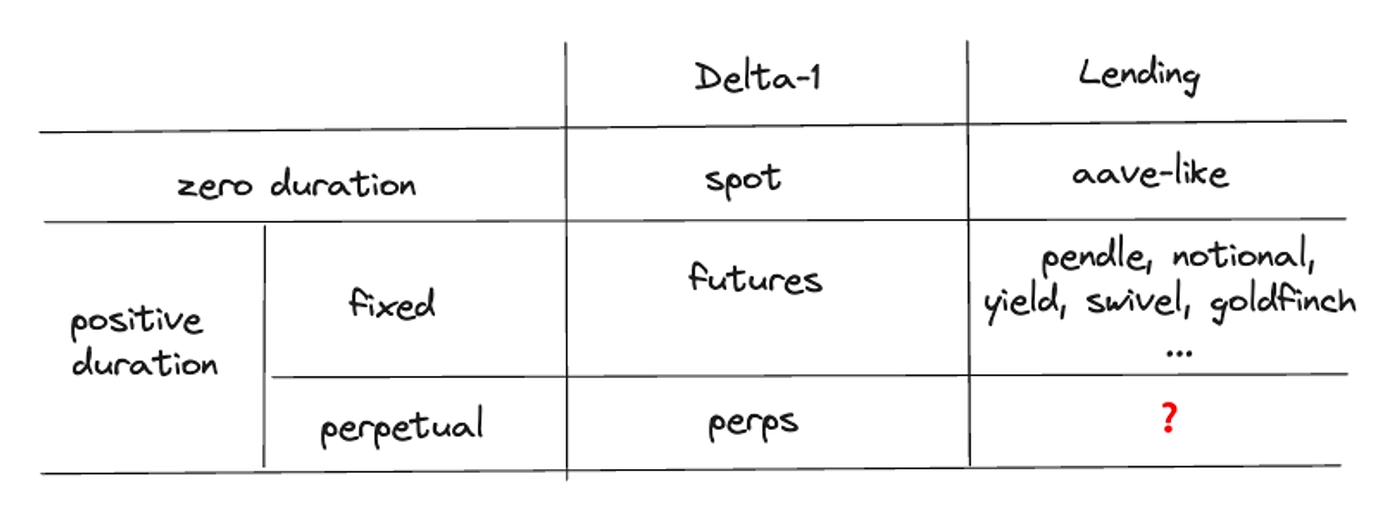
The lack of lending protocols that serve a positive duration perpetual loan suggests there might be something there.
A positive duration perp-loan would allow a few things:
- Consolidation of liquidity
- The ability to trade rates efficiently (i.e. profit when you take on debt and the interest rate moves up, like the lucky souls who locked in mortgages in 2021)
- Truly market-priced rates
- Exotic collateralization mechanisms
How might we construct a perp loan with positive duration? If perp futures were any indication, loan funding must be a function of the price of the underlying and the price of the contract.
But to stay on topic, I will leave this for a future post. Instead, If this piqued your interest (pun intended), you can either wait for it, or you can find the answer yourself in Alliance’s latest graduated cohort.
More on positive duration
Positive duration is particularly interesting. For academics and policy makers, it provides an insight into the market’s expectations of future lending rates. In fact, the US treasury yield curve is one of the most important economic indicators.
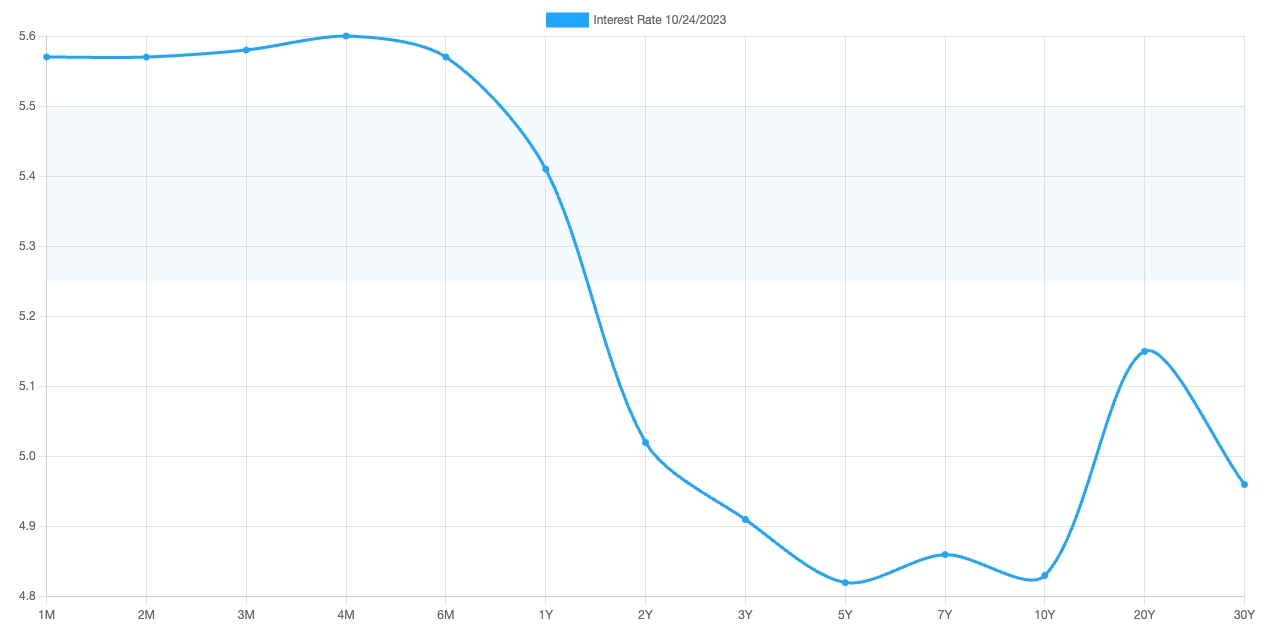
For businesses, it provides a way to match future expected income with the right debt duration, and therefore remove the risks of interest rate fluctuations. This is also called immunization.
In crypto, we have not seen much liquidity go into longer term duration loans.
It’s possible that the reason is liquidity fragmentation. For fixed-term loans, even if you only issue a couple terms, say 1-year and 5-year, in 6 months the loans are now 6-months and 4.5-year. So the market ends up being littered with all sorts of durations.
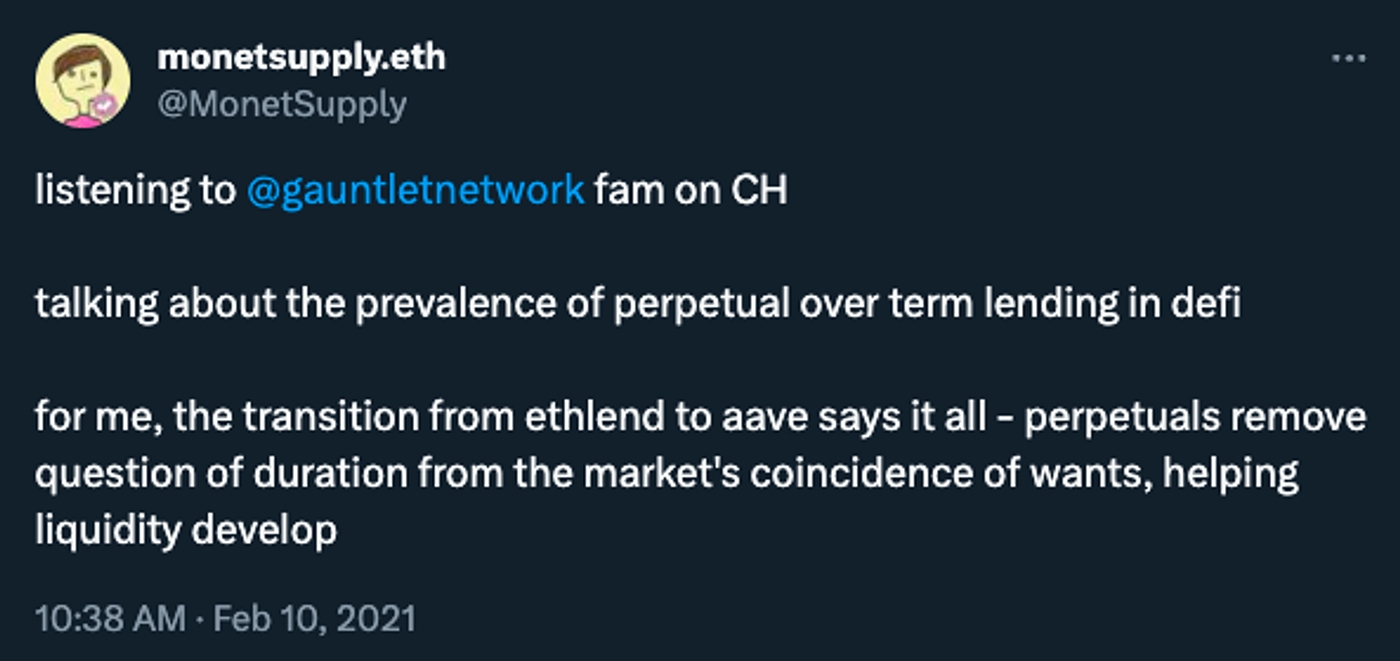
Another reason could be that there is not yet natural demand in crypto for longer duration debt because it’s still an immature space. Individuals trade on short timescales. Even businesses (protocols) have difficulty estimating future cash flow (or lack thereof). Or, there is simply no good way yet to match that demand and supply. Again, check out Alliance’s latest demo day.
The most liquid and growing right now is probably Pendle Finance. The market story there is giving traders the ability to speculate on the future yield of crypto-native assets like ETH liquid staking derivatives, Maker’s DAI savings rate, and others.

For example, this sDAI market below is saying that although the current DAI savings rate is 5%, over the next 337 days, the market is expecting the rate to drop. So the 337-day fixed rate is trading at 4%. The “Long Yield” is what you get by locking 337 days’ worth of 4% yield, ensuring the fixed yield is fully collateralized, and then receiving the floating yield for 337 days, assuming it stays constant.

The fact that there’s now three maturities on sDAI (zero day, 115d, and 337d) begins to give us an idea of how sDAI’s yield curve looks like.
Callability
One common feature of positive duration loans is optionality. If the borrower has the right to fully pay back the loan at any time, the loan is callable, or redeemable. For example, when interest rates go down, the borrower would like to pay that lower rate. So they take out a new loan at lower rates and pay the old loan back.
In the US, when you get a mortgage, you are actually issuing callable debt. That is because you’re allowed to refinance the mortgage at a lower rate. You’re paying for that optionality. So if interests go down and you don’t refinance, you’re effectively not taking advantage of the option!
The reverse case is when the investor has the right to recall the debt, demand early repayment, making the loan puttable.
An example is Blur’s NFT lending. A borrower locks their NFT as collateral and takes out a loan at a certain rate. The loan never needs to be paid back (infinite duration!) unless the lender decides to recall the puttable loan. That kicks off a dutch auction process where the loan can be refinanced at zero APY and then at increasingly higher rates, until the auction reaches a rate where the collateral is given to the lender.
Despite some mingling between the liquidation process and the puttability, I still say the loan is puttable because when rates go up, the lender has the incentive to go through this process.
The taxonomy so far
In this post we covered the basics of lending. Lending is characterized by the interest rate charged and collateralization. Interest has a duration and a rate. We covered the duration in depth, going from zero to non-zero durations, fixed vs perpetualization, and optionality.
In subsequent posts, I will cover how interest rates are set in various protocols, the various forms of collateralization and liquidation mechanisms, and the resulting user experience that arise from those choice.
I also started a work-in-progress spreadsheet to organize this information as I document more lending protocols under this taxonomy. Enjoy!
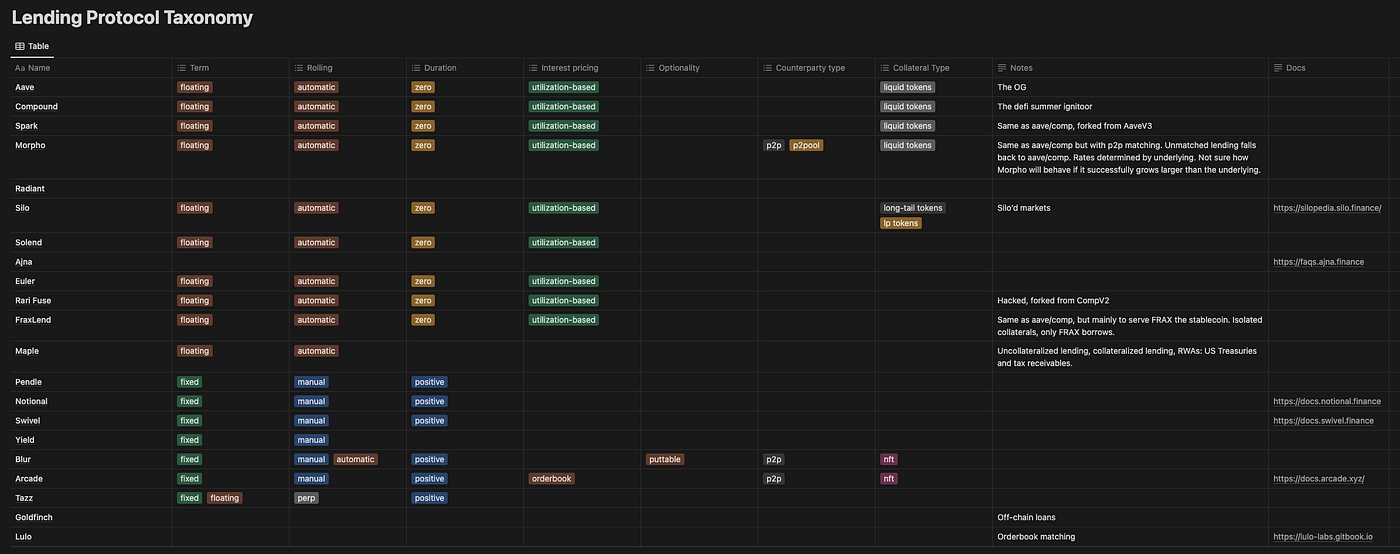
Related Links
https://www.gauntlet.xyz/resources/making-sense-of-the-defi-lending-meta
https://defillama.com/protocols/Lending
https://www.paradigm.xyz/2021/03/the-cartoon-guide-to-perps
More to Read
You're Vibe Coding Wrong

Mohamed Elseidy
·Jul 10
Most developers use Tier 1 for UX & rapid prototyping, Tier 2 for daily development, and Tier 3 for complex engineering challenges. The best strategy is to combine them when needed rather than trying to force one tool to do everything. Here's what each tier actually delivers and when you should use them
Your Moat Isn't Your AI Prompt. It's Your Evaluations

Mohamed Elseidy
·Jun 17
Anyone can copy a prompt, but they can't replicate the months of iterative learning, the domain knowledge and the edge cases discovered through real user interactions, and the systematic evaluation framework that guided every prompt tweaking decision.
Shopping is Dead, AI is Taking Over

Mohamed Elseidy
·May 28
Major payment networks are building the infrastructure while AI platforms began to deploy; for startups, this opens opportunities in vertical specialization and merchant tools; and SEO will evolve into AEO as businesses adapt to optimize for AI agents rather than human shoppers.